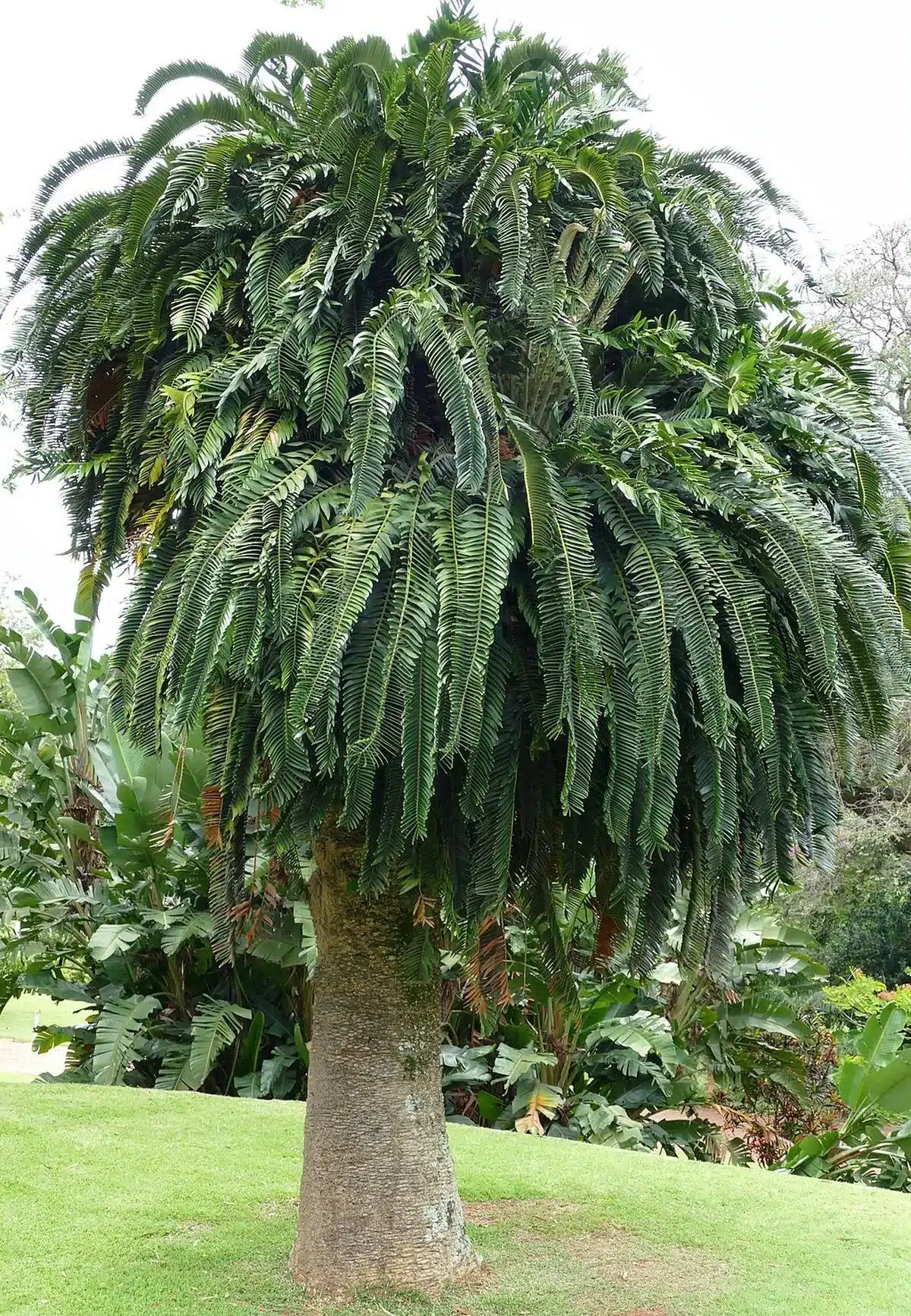About Encephalartos woodii
- It is a plant from South Africa and is a member of the cycad family with thick trunks and large stiff leaves that form a majestic crown.
- Cycads are the oldest surviving plant groups alive today and are often referred to as “living fossils” or “dinosaur plants” due to their evolutionary history dating back to the Carboniferous period, approximately 300 million years ago.
- During the Mesozoic era (250-66 million years ago), also known as the Age of Cycads, these plants were ubiquitous, thriving in the warm, humid climates that characterised the period.
- Although they resemble ferns or palms, cycads are not related to either. Cycads are gymnosperms, a group that includes conifers and ginkgos. Unlike flowering plants (angiosperms), cycads reproduce using cones.
- It is impossible to tell male and female apart until they mature and produce their magnificent cones.
- Female cones are typically wide and round, and male cones appear elongated and narrower.
- The male cones produce pollen, which is carried by insects (weevils) to the female cones. This ancient method of reproduction has remained largely unchanged for millions of years.
- Despite their longevity, today cycads are ranked as the most endangered living organisms on Earth with the majority of the species considered threatened with extinction.
- This is because of their slow growth and reproductive cycles, typically taking ten to 20 years to mature, and habitat loss due to deforestation, grazing and over-collection.
- Threats: Their striking appearance and ancient lineage make them popular in exotic ornamental horticulture and that has led to illegal trade.
Q1: What is Gymnosperm?
These are any vascular plant that reproduces by means of an exposed seed.The seeds of many gymnosperms (literally, “naked seeds”) are borne in cones and are not visible until maturity.
Source: Scientists search for a female partner for world’s ‘loneliest’ plant
Last updated on July, 2025
→ UPSC Notification 2025 was released on 22nd January 2025.
→ UPSC Prelims Result 2025 is out now for the CSE held on 25 May 2025.
→ UPSC Prelims Question Paper 2025 and Unofficial Prelims Answer Key 2025 are available now.
→ UPSC Calendar 2026 is released on 15th May, 2025.
→ The UPSC Vacancy 2025 were released 1129, out of which 979 were for UPSC CSE and remaining 150 are for UPSC IFoS.
→ UPSC Mains 2025 will be conducted on 22nd August 2025.
→ UPSC Prelims 2026 will be conducted on 24th May, 2026 & UPSC Mains 2026 will be conducted on 21st August 2026.
→ The UPSC Selection Process is of 3 stages-Prelims, Mains and Interview.
→ UPSC Result 2024 is released with latest UPSC Marksheet 2024. Check Now!
→ UPSC Toppers List 2024 is released now. Shakti Dubey is UPSC AIR 1 2024 Topper.
→ Also check Best IAS Coaching in Delhi















